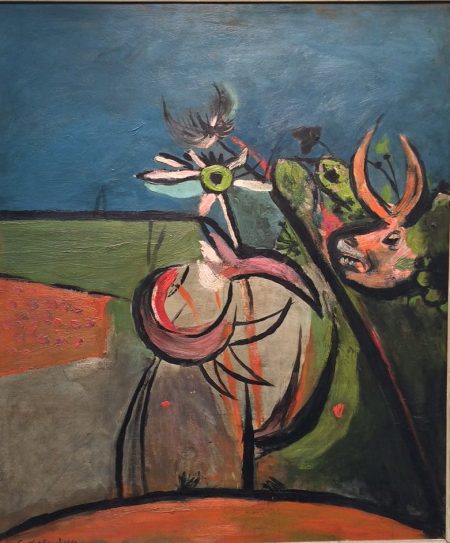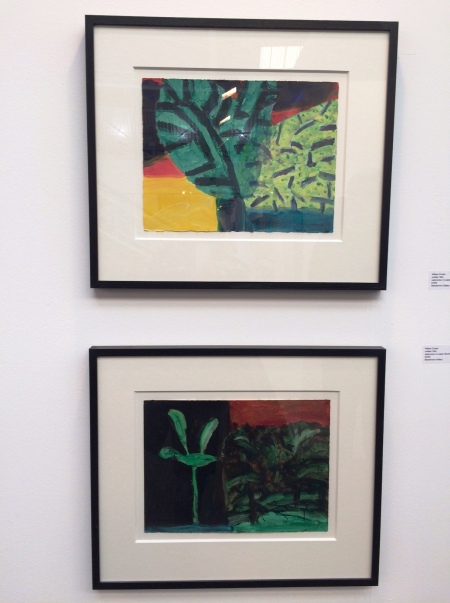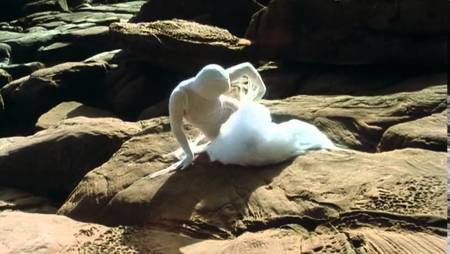London Art Fair
This was a couple of weekends ago, but I thought I might put up some of my favourites:
Chloe Lamb
Great little corner of abstracts. One of her big ones is a little Lanyon-ish (didn’t see any Lanyons this year) but the colours are very strong, I think.
Dorothy Mead
Terrific drawing by the Bomberg acolyte. I actually prefer her stuff to the Master.
William Brooker
I put up a photo of a Brooker painting at the fair last year; it was a beautiful table assemblage in that precise Coldstream/Uglow style (see below). This one of the nude in bed reminds me more of Sickert, however.
Patrick Proctor
Huge, screen-like painting – actually, they ARE screens in the picture, aren’t they? Great painter, often similar to Hockney.
Duncan Grant
Typical Grant piece, maybe a little conventional, but I like it.
Iconoclasts – Art Out of the Mainstream, Saatchi Gallery
The Ice Cream Seller, Danny Fox
That blue cheered me up on a cold, dismal morning in the week.
The Professor, Josh Faught
Faught does loose textile pieces hung with bits and pieces, joke cards, badges, a spilt coffee cup, most of which relates to the gay scene in the US. They are colourful and funny and sad. I love that spilt coffee disc, made out of resin; had to touch it when the attendant wasn’t attending..
Corvid, Kate MccGwire
The external skin of this giant intertwining black sausage is composed of crow feathers – hence the title.
Philip Pearlstein, Saatchi Gallery until 25th March
Eight of Pearlstein’s intricate, crowded pictures of pallid, pensive nude women, sort of interacting with various props, mostly by being draped around them. Sometimes, the toys, animals, dinosaurs and duck lures seem to be eyeing them.
Models and Blimp (1991)
Apparently, they are done from life, although the angles and proportions sometimes suggest photographs.
Theo Angelopoulos
I’ve just completed viewing another box set of this fantastic director’s films. They are often “stately paced” and solemn; sometimes he lectures you on history through the mouths of the characters; but they are operatic, visually arresting, the ever- present music is plaintive and beautiful. The Greek and Balkan landscapes are rough and mountainous; it’s often snowing, raining, flooding. Groups or pairs of weary individuals lug dusty suitcases along empty streets to deserted railway stations, drink in shabby, bare cafes; suited men and women in 40s dresses dance to guitar, sax and accordion jazz in bare dance halls or on promenades, until Fascists. or police, or soldiers show up and everyone scatters; occasional outbreaks of violence, hangings, rapes, shootings – and the slow unrolling of history. Often, he uses major international actors; Marcello Mastroianni, Harvey Keitel, Irene Jacob, Bruno Ganz, William Dafoe.
Ulysses’ Gaze (1995)
A giant, disassembled statue of Lenin floats down a Greek (or Romanian?) river to a new home.
The Weeping Meadow (2004)
Carcases of slaughtered sheep festoon a tree outside the village big house, to signify the neighbours’ disgust at the occupants’ actions.
The Dust of Time (2009)
Prisoners of the gulag climb and descend an open stairway in a snowbound Soviet landscape.
Flame Landscapes
Blackpaint
30/01/18

































